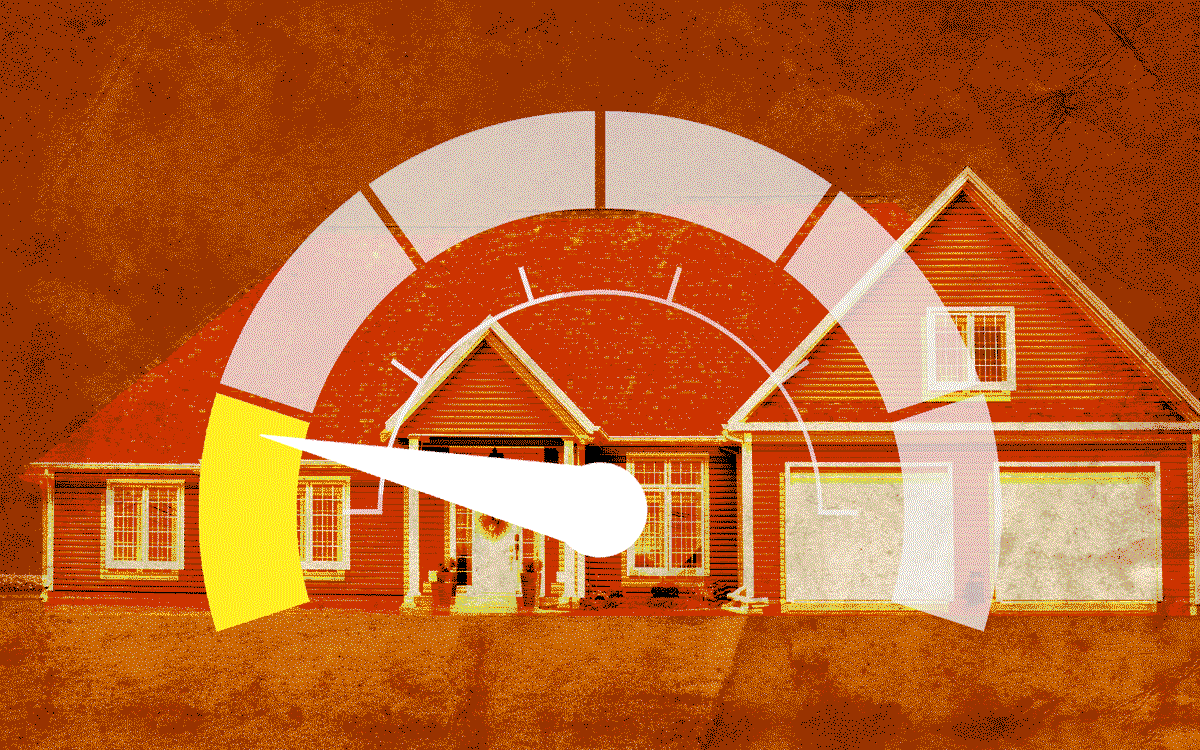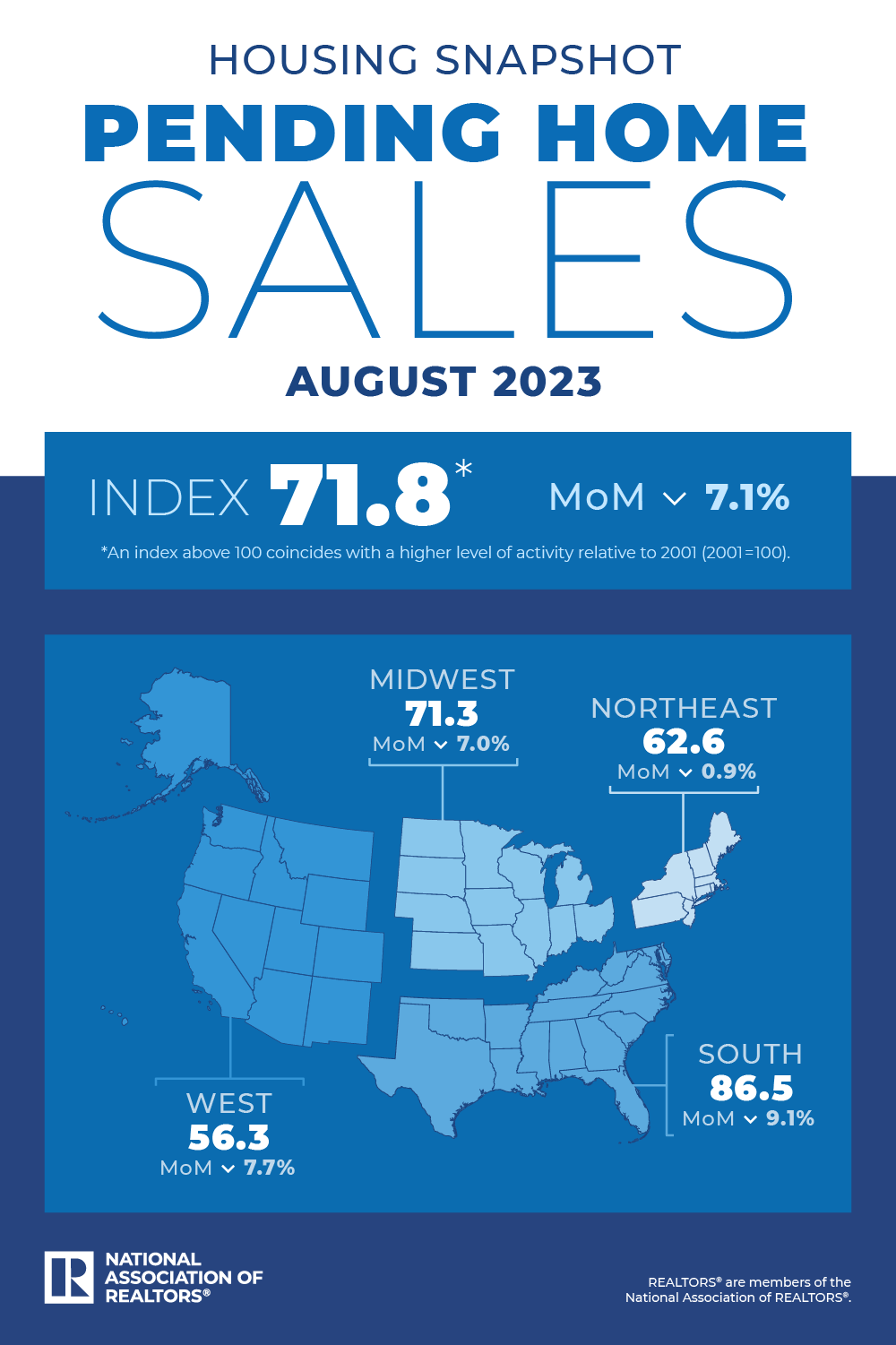Pending home sales down, yes down
Boston Condos for Sale in 2024
Pending home sales down, yes down
Pending home sales down, yes down
Home contract signings at lowest point in recorded history
Pending sales sink to 23-year nadir, Realtors report shows

Pending transactions, which offer a preview of future sales activity, were 8.5 percent lower in July than they were a year ago. No region was spared from the monthly decline in contract activity and only the Northeast showed an annual increase.
NAR chief economist Lawrence Yun stated that even positive job growth and a more robust inventory of for-sale homes were not enough to overcome persistent affordability challenges.
There is hope for the future, according to Yun, as “falling mortgage rates will no doubt bring buyers into [the] market.” This week, mortgage rates fell to their lowest level in 14 months, and could go lower yet if the Federal Reserve cuts the federal funds rate, as Fed chair Jerome Powell recently signaled it would in September.
Another glimmer of optimism for the home-sales industry: For-sale inventory at the end of July was 1.33 million homes, an increase of nearly 20 percent year-over-year.
Yun and NerdWallet mortgage expert Kate Wood alluded to the possibility that potential buyers and sellers may be adopting a wait-and-see approach as the 2024 presidential election nears. Several housing economists, however, recently The Real Deal they’ve found no empirical evidence that election years have any effect on the housing market.
__________
Pending-home sales fall 7.1% on high interest rates
Pending-home sales dropped 7.1% from July to August as mortgage rates topped 7%, sapping homebuyer demand, the National Association of REALTORS® said, citing its Pending Home Sales Index.
 Pending sales, in which the contract has been signed but the transaction has not closed, are considered a leading indicator and generally precede existing-home sales by a month or two. Year over year, sales were down 18.7%.
Pending sales, in which the contract has been signed but the transaction has not closed, are considered a leading indicator and generally precede existing-home sales by a month or two. Year over year, sales were down 18.7%.
“Some would-be homebuyers are taking a pause and readjusting their expectations about the location and type of home to better fit their budgets,” NAR Chief Economist Lawrence Yun said in a press release. “It’s clear that increased housing inventory and better interest rates are essential to revive the housing market.”
Regionally, pending sales were down across the board on both a monthly and an annual basis.
The high mortgage rates have a dual impact on the housing market: reducing affordability for potential buyers and keeping existing homeowners, who don’t want to give up their lower-rate mortgages, in place, First American Deputy Chief Economist Odeta Kushi said.
“A double whammy – downward pressure on demand and supply.”
____________________________________________________________________________________________________
May pending-home sales slid 2.7% compared to April and fell 22.2% from a year earlier as low inventory continued to keep transactions at a slow tempo, the National Association of REALTORS® reported, citing its Pending Home Sales Index.
“Despite sluggish pending contract signings, the housing market is resilient with approximately three offers for each listing,” NAR Chief Economist Lawrence Yun said in a press release. “The lack of housing inventory continues to prevent housing demand from being fully realized.”
Pending sales, in which the contract has been signed but the transaction has not closed, are considered a leading indicator and generally precede existing-home sales by a month or two.
“There is plenty of demand on the sidelines, the labor market remains strong, and potential home buyers are ready to jump in,” First American Economist Ksenia Potapov said. “While limited inventory is likely to hold back sales activity, the housing market remains resilient.”
Regionally, pending home sales jumped in the Northeast but were lower in the Midwest, West and South.
“The spring home-buying season has struggled to gain momentum. Mortgage rates remain high, reducing house-buying power and keeping existing homeowners rate-locked into their homes,” Potapov said. “As a result, the inventory of homes for sale, which typically increases throughout the spring and summer months, has remained near winter lows.”
Updated: Boston Real Estate Blog 2023
___________________________________________________________________________________________________________________________________
Updated: Boston Real Estate Blog 2023
___________________________________________________________________________________________________________________________________________

(Getty)
Pending home sales down, yes down
Boston condo for sale buyers are still slowing their pandemic-fueled, contract-signing binge in response to the triple whammy of rising mortgage rates, high housing prices and low inventory.
The number of pending home sales dipped by 8.6 percent in June after a slight uptick in May, resuming the previous six months’ trend of declines, a report from the National Association of Realtors showed Wednesday.
June’s contract signings dropped a hefty 20 percent from last year. Meanwhile, housing was 80 percent more expensive than June 2019, taking mortgage rates into account.
The U.S. housing market has slowed thanks to a confluence of factors pushing housing prices and lending rates up, while both supply and household budgets are crimped by inflation.
“Contract signings to buy a home will keep tumbling down as long as mortgage rates keep climbing,” predicted NAR chief economist Lawrence Yun. Contract signings are an indicator of sales in the months ahead.
While the drop in pending home sales last month pervaded the country, the West felt it most, with a 15.9 percent decrease from the previous month. That region also has the worst housing affordability, according to an NAR index that factors in prices and household income.
Evidence that the housing market is slowing has been cropping up across several indicators, such as the Case-Shiller home price index. Although home prices remain at historic highs, they may be plateauing based on a slight drop in the rate of increase last month
In an effort to rein in inflation, the Federal Reserve has raised interest rates three times this year, leading to the higher cost of mortgages. The latest rate hike came today, when Fed Chair Jerome Powell announced a second 0.75 percentage point increase.
But, Yun said, current trends might soon end.
“There are indications that mortgage rates may be topping [out] or very close to a cyclical high in July,” said the economist. “If so, pending contracts should also begin to stabilize.”
_______________________________________________________________________________________________________________________________
Pending U.S. home sales slipped last month as prices remained high and supply continued to dry out.
Home contract signings fell in November after rising in the previous month, according to the latest report from the National Association of Realtors.
The month-over-month decline was seen in every region of the U.S. The Midwest had the biggest decrease, with contracts falling 6.3 percent from October. Still, the region was the only one where more deals were signed than were inked a year ago, although the increase was just 0.2 percent.
The dip can be attributed in part to low housing supply and hesitation surrounding home prices, said NAR chief economist Lawrence Yun. Delays caused by the omicron variant could stall the market as buyers and sellers become sidelined and construction is delayed, Yun added. More than 19 percent of New Yorkers’ Covid tests Tuesday came back positive.
“While I expect neither a price reduction nor another year of record-pace price gains, the market will see more inventory in 2022 and that will help some consumers with affordability,” Yun said.
Despite the drop in contracts, demand for homes remained high. These days, it takes roughly 18 days for homes to go into contract after being listed, Yun said.
“Buyer competition alone is unrelenting, but home seekers have also had to contend with the negative impacts of supply chain disruptions and labor shortages this year,” Yun said.
The Massachusetts Association of REALTORS® (MAR) reported today that the number of single-family homes put under agreement in June were down 16.0 percent over the same time last year, while condominiums were down 21.0 percent. This is the second month in a row that the number of both single-family homes and condominiums put under agreement has decreased compared to the year before.
From the MAR:
“June is following the same script as May with pending sales down after the expiration of the tax credit,” said 2010 MAR President Kevin Sears, broker/co-owner of Sears Real Estate in Springfield. “While we can anticipate the number of closed sales in June going up, the summer months will give us a better understanding of where the market is and whether affordable prices and interest rates below the five-percent range will keep the market moving along.”
The number of single-family homes put under agreement in June was down 16.0 percent compared to the same time last year (5,153 homes in 2009 to 4,354 homes in 2010). On a month-to-month basis, single-family homes put under agreement were down 6.6 percent from 4,663 homes in May.
The number of condos put under agreement in June was down 21.0 percent compared to June 2009 (2,127 units in 2009 to 1,689 units in 2010). On a month-to-month basis, condos put under agreement were down 10.8 percent from 1,894 units in May.

Click Here to view: Google Ford Realty Inc Reviews
Boston Condos for Sale in 2023